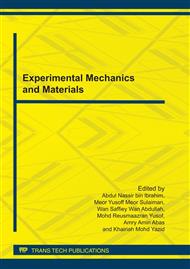p.19
p.22
p.28
p.35
p.41
p.48
p.54
p.60
p.66
Development of a Gamma-Ray Process Tomography System for Hydrodynamic Characterisation of Multiphase Reactors
Abstract:
Gamma-ray computed tomography (CT) is a powerful non-invasive imaging technique for viewing an object in 2-D or 3-D cross-section images without the need to physically section it. The invention of CT technique revolutionised the field of medical diagnostic imaging because it provides more detailed and useful information than any previous non-invasive imaging technique. The method is increasingly used in industrial fields. This paper describes the development of a gamma-ray computed tomography system for imaging and visualising of industrial multiphase reactors. The theoretical aspects of CT scanner, the system configurations and the adopted algorithm for image reconstruction are discussed. Penetrating radiation from an isotopic gamma-ray source of Cs-137 and a bank of NaI(Tl) scintillation detectors in combination with a dedicated mechanical gantry set-up were used to construct the CT system. During scanning, the movement of the detector’s bank and rotation table is controlled by a LabView-based software. The software is also designed to control all associated nuclear electronics equipments and finally to acquire gamma-ray transmission data. The image reconstruction is performed by using Expectation-Maximisation (EM) and Alternating-Maximisation (AM) algorithms written in Visual-Fortran programming language. Several physical phantoms to simulate industrial multiphase process columns and reactors were scanned using this CT scanner. Some of the reconstructed images are presented in this paper.
Info:
Periodical:
Pages:
41-47
Citation:
Online since:
July 2011
Price:
Сopyright:
© 2011 Trans Tech Publications Ltd. All Rights Reserved
Share:
Citation:


